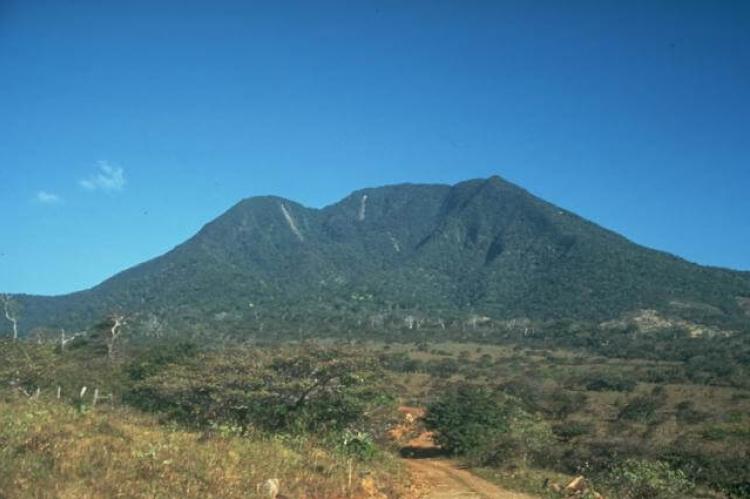The Ecological Wonders of Guanacaste National Park
Guanacaste National Park, located in northern Costa Rica, is a sanctuary for incredible wildlife and diverse ecosystems. The park forms a vital biological corridor linking the dry forests of Santa Rosa National Park with the lush rainforests of the Orosí and Cacao volcanoes.
Guanacaste National Park: Bridging Ecosystems in Northern Costa Rica
Guanacaste National Park, located in the northern part of Costa Rica, is a sanctuary for an incredible array of wildlife and diverse ecosystems. Spanning approximately 32,500 hectares (80,300 acres), the park forms a vital biological corridor linking the dry forests of Santa Rosa National Park with the lush rainforests of the Orosí and Cacao volcanoes. This connectivity supports seasonal migrations of various species and preserves the rich biodiversity that Costa Rica is renowned for. This comprehensive exploration delves into the park's geography, ecosystems, flora and fauna, and significance as a conservation area.
Geography and Ecosystems
Location and Landscape
Guanacaste National Park stretches from the slopes of the Orosí and Cacao volcanoes westward to the Interamerican Highway. The nearest city, La Cruz, lies to the northwest. The park's diverse topography includes volcanic hills and lowland plains formed by volcanic ash, pyroclasts, and ignimbrites. This varied landscape supports many ecosystems, from dry forests at lower elevations to cloud forests and rainforests on the volcanic slopes.
Volcanic Influence
The Maritza Biological Station, located at the foot of Orosí volcano, is an essential research hub within the park. The western slopes of these volcanoes are blanketed with evergreen rainforests, where trees can reach heights of up to 30 meters (100 feet). Dominant tree species in these forests include the Santa María, Tempisque, and Monkey Apple. The region experiences a distinct rainy season from May to November, followed by a dry season characterized by intense sunlight.
Biodiversity Hotspot
Flora
Guanacaste National Park boasts a remarkable diversity of plant life. The lower elevations host dry forests, while higher elevations transition into cloud forests and rainforests. The park's flora includes towering trees, lush undergrowth, and a variety of endemic plant species. The seasonal variations in rainfall and temperature create unique microhabitats that support this floral diversity.
Fauna
The park is a haven for wildlife, home to 140 species of mammals, over 300 species of birds, 100 species of amphibians and reptiles, and more than 10,000 identified insect species. Collared peccaries, howler monkeys, white-nosed coatis, white-tailed deer, variegated squirrels, long-tongued bats, and capuchin monkeys inhabit the dry forests. The park also provides a critical habitat for wide-ranging predators like jaguars, mountain lions, and numerous bird and insect species that utilize the biological corridor between the dry and wet forests.
Cultural and Historical Significance
Pre-Columbian Heritage
Guanacaste National Park is not only a natural treasure but also a site of cultural and historical importance. Near the plain at El Pedregal, along the trail to the Orosi Volcano, visitors can find pre-Columbian petroglyphs. These ancient carvings offer a glimpse into the region's early human history and add an archaeological dimension to the park's significance.
Conservation and Protection
World Heritage Site
Guanacaste National Park is part of the Área de Conservación Guanacaste, a UNESCO World Heritage Site. This designation underscores the park's global importance as a conservation area. The Costa Rican government has implemented measures to protect this biodiversity hotspot, recognizing its role in preserving species and ecosystems crucial to the planet's environmental health.
Biological Corridors
The creation of Guanacaste National Park was driven by the need to establish a continuous biological corridor connecting different forest types and elevations. This corridor is essential for the seasonal migrations of numerous species, ensuring their survival and promoting genetic diversity. It allows animals to move between habitats, find food, and reproduce, maintaining healthy populations.
Conclusion
Guanacaste National Park is a testament to Costa Rica's commitment to biodiversity conservation and sustainable environmental management. Its diverse landscapes, rich flora and fauna, and cultural heritage make it a unique and invaluable part of the country's natural legacy. The park's role as a biological corridor and a protected area ensures that its ecological treasures will be preserved for future generations to study and enjoy.

![Río Tempisque, Bolsón, Guanacaste, Costa Rica by Tizianok [CC BY-SA (https://creativecommons.org/licenses/by-sa/3.0)] Río Tempisque, Bolsón, Guanacaste, Costa Rica](/sites/default/files/styles/large/public/rio_tempisque_guanacaste_opt%20%281%29.jpg?itok=tb269woA)